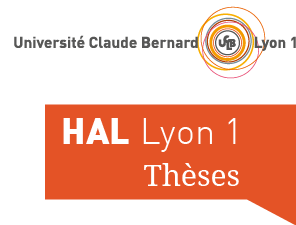Influence of environmental perturbations on the wMelPop-D. melanogaster association
Influences des perturbations environnementales sur l’association wMelPop-D. melanogaster
Résumé
A majority of insects live in association with endosymbionts that can have a significant impact on their phenotype expression. The balance between the benefits and costs perceived by the host determines the relationship between the partners. These long-lasting interactions thus range from mutualism, when the balance is tilted towards benefits, to parasitism, when the balance is tilted towards costs. This balance can be influenced both by host and/or bacterial genetic determinants but also by environmental factors. The relationship between symbiotic partners is therefore not fixed, and the interaction may evolve during the life of the host or over generations along the continuum. Symbiotic density within a host is an important feature of the symbiotic relationship, as it is involved in both the transmission success of symbionts and the intensity of costs and benefits perceived by the host. Symbiotic density in insects is usually tightly regulated by the partners, but the balance of this regulation can be disrupted by various environmental constraints. My thesis work consisted in characterizing the different determinants and evolutionary forces that may be at play in the regulation of an intracellular bacterium within its insect host, and in measuring the influence of environmental perturbations on the balance of this symbiotic relationship in the short term, and their evolutionary consequences in the medium term. We chose to study the very particular relationship between the fruit fly Drosophila melanogaster and the Wolbachia bacterial strain wMelPop. Indeed, wMelPop hyper-proliferates in the host tissues, which can be very costly or very beneficial depending on the environmental context. Moreover, the symbiotic density of this strain seems to correlate with the number of copies of a region of the bacterial genome named Octomom. This variability could favor a rapid evolution of the bacterial population under the influence of certain environmental constraints. Moreover, this genetic marker allows us to evaluate the evolutionary forces that influence the diversity of endosymbionts in the short and medium term. In a first study we identified that density is mainly controlled by Octomom copy number, and that drift is an evolutionary force that greatly influences the transmission of different wMelPop variants in the absence of environmental stress. Next, we characterized both the vulnerability of the association and the beneficial contribution of symbionts by performing experimental evolution under environmental constraints, involving point or chronic exposure to pro-oxidant and/or viral agents. We have demonstrated a very low response to selection by the association in environmental contexts that impact the selective value of the hosts and/or the symbionts. We discuss these results in the context of the vulnerability of symbiotic associations to environmental changes and the adaptive potential of symbioses established in a changing environmental context.
Une majorité d’insectes vit en association avec des endosymbiotes qui peuvent avoir un impact significatif sur l’expression de leur phénotype. La balance entre les bénéfices et les coûts perçus par l’hôte conditionne la relation entre les partenaires. Ces interactions durables s’étendent donc du mutualisme, lorsque la balance penche vers les bénéfices, jusqu’au parasitisme, lorsque la balance penche vers les coûts. Cette balance peut être influencée à la fois par des déterminants génétiques hôte et/ou bactérien mais aussi par des facteurs environnementaux. La relation entre des partenaires symbiotiques n’est donc pas figée, et l’interaction peut évoluer au cours de la vie de l’hôte ou bien au fil des générations le long du continuum. La densité symbiotique au sein d’un hôte est une caractéristique importante de la relation symbiotique, car elle est impliquée à la fois dans le succès de transmission des symbiotes et dans l’intensité des coûts et des bénéfices perçus par l’hôte. La densité symbiotique chez les insectes est généralement finement régulée de la part des partenaires, mais l’équilibre de cette régulation peut être perturbé par différentes contraintes environnementales. Mon travail de thèse a donc consisté à caractériser, d’une part, les différents déterminants et forces évolutives qui peuvent entrer en jeu dans la régulation d’une bactérie intracellulaire au sein de son hôte insecte, et d’autre part, à mesurer l’influence de perturbations environnementales sur l’équilibre de cette relation symbiotique à court terme, et leurs conséquences évolutives à moyen terme. Nous avons choisi d’étudier la relation très particulière entre la mouche du fruit Drosophila melanogaster et la souche bactérienne Wolbachia wMelPop. En effet, wMelPop hyper-prolifère dans les tissus de l’hôte, ce qui peut s’avèrer très coûteux ou bien très bénéfique selon le contexte environnemental. De plus, la densité symbiotique de cette souche semble corréler au nombre de copies d’une région du génome de la bactérie nommée Octomom. Cette variabilité pourrait favoriser une évolution rapide de la population bactérienne sous l’influence de certaines contraintes environnementale. Par ailleurs, ce marqueur génétique permet d’évaluer les forces évolutives qui influencent la diversité des endosymbiotes à court et moyen terme. Au cours d’une première étude nous avons identifié que la densité est principalement contrôlée par le nombre de copies d’Octomom, et que la dérive est une force évolutive qui influence grandement la transmission des différents variants de wMelPop en absence de stress environnemental. Ensuite, nous avons caractérisé à la fois la vulnérabilité de l’association et l’apport bénéfique des symbiotes en réalisant une évolution expérimentale sous contraintes environnementales, impliquant une exposition ponctuelle ou chronique à des agents pro-oxydants et/ou viraux. Nous avons mis en évidence une très faible réponse à la sélection de la part de l’association dans des contextes environnementaux impactant pourtant la valeur sélective des hôtes et/ou les symbiotes. Nous discutons l’ensemble de ces résultats dans le cadre de la vulnérabilité des associations symbiotiques à des changements environnementaux et du potentiel adaptatif des symbioses établies dans un contexte d’environnement changeant.
| Origine | Version validée par le jury (STAR) |
|---|
